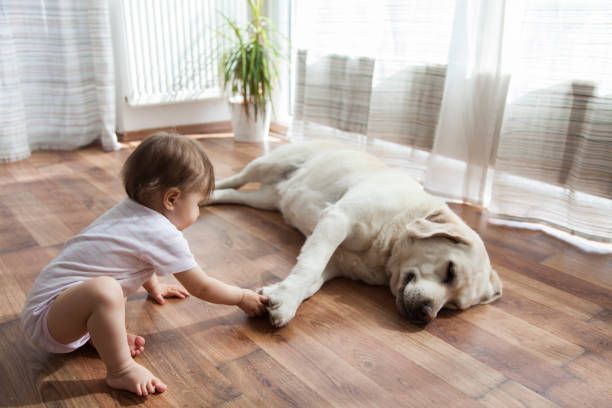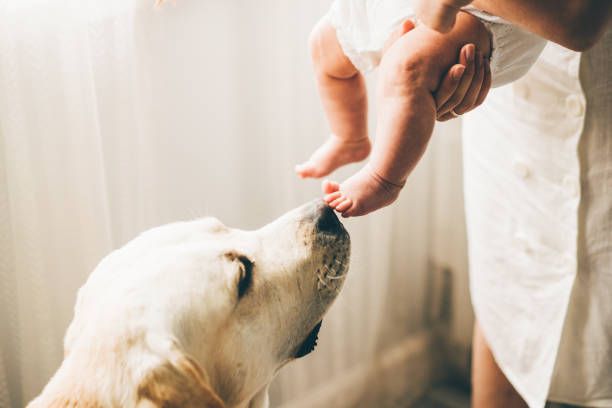
When welcoming a newborn, pet parents often worry about how their dog will adjust to the new family member. This requires preparation, gradual introduction, and continuous positive reinforcement. Here are some detailed tips to help your dog adapt to the arrival of your baby.
Preparation
- Basic Command Training: Ensure your dog has mastered basic commands like “sit” and “stay.” Solid foundational training helps you control your dog’s behavior, ensuring the baby’s safety. Use positive reinforcement methods during training to strengthen good behavior.
- Adapt to New Environment: Gradually introduce your dog to the baby’s future activity areas to avoid sudden environmental changes that may cause anxiety. Familiarize your dog with the scent and sounds of baby items like cribs and strollers. You can also play recordings of baby cries to help your dog get used to these sounds in advance.
- Simulate Child Behavior: Prepare your dog for child-like behaviors such as pulling and patting. Use a doll to simulate these actions, observe your dog’s reactions, and correct any inappropriate behavior. This helps reduce stress when the dog faces the real baby.
- Create a Safe Space: Provide a designated safe area for your dog where it can retreat if it feels uneasy or needs rest. This can be a bed, a room, or a corner, ensuring your dog has a place to escape when stressed.
Interaction with the Baby
- Introduce Scents in Advance: Before the baby comes home, bring home some baby clothes for your dog to smell. This helps reduce the dog’s unfamiliarity with the new family member and aids in quicker acceptance.

- Gradual Introduction: During the first meeting between your dog and baby, remain calm and control the duration, gradually increasing their interaction time. Ensure the introduction takes place in a quiet, distraction-free environment to prevent the dog from feeling tense due to external factors.
- Positive Reinforcement: Reward your dog for good behavior around the baby to reinforce positive associations. For example, when your dog remains calm near the baby, give it treats or praise to help the dog associate the baby with positive experiences.
Maintaining Normal Life
- Keep Routines: Try to maintain your dog’s regular habits and schedules to reduce stress from environmental changes. Continue daily walks and playtime to ensure your dog feels the same level of care and attention.
- Emotional Engagement: After the baby arrives, don’t neglect your dog’s emotional needs. Continue to provide attention and affection to ensure your dog doesn’t feel neglected. This reduces jealousy and helps the dog accept the new family member better.
Safety and Monitoring
- Supervise Interactions: Never leave your dog and baby alone together; always supervise to ensure safety. No matter how gentle the dog is, always exercise caution to prevent accidents.

- Recognize and Manage Stress Signals: Learn to identify stress signals in your dog, such as ears pulled back, yawning, and lip licking. If your dog shows these signs, give it space and time to relax, avoiding overstimulation.
Conclusion
With preparation, gradual introduction, and positive reinforcement, you can help your dog adapt to the new family member, ensuring the safety and harmonious coexistence of both the baby and the pet. Patience and consistency are key to success. Active participation and careful observation by family members will help create a harmonious and happy family environment.
